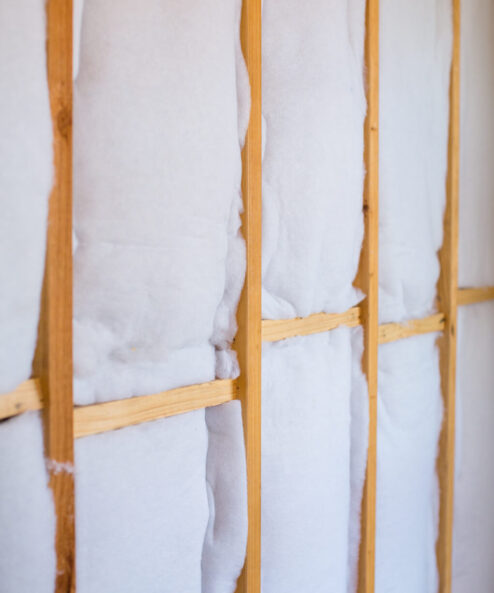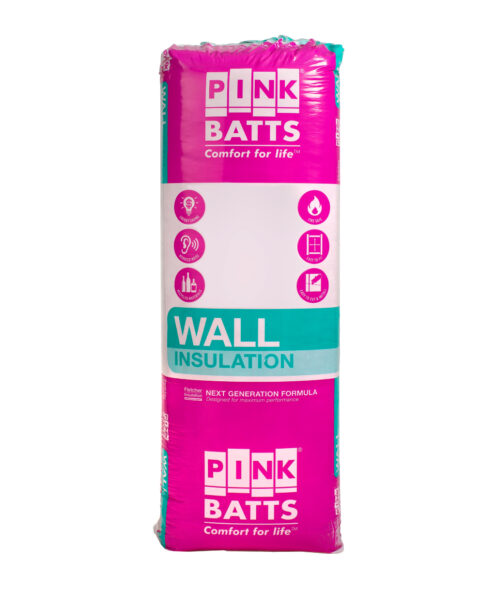R2.0 Insulation
R2.0 insulation is a popular standard for wall insulation in many cities and regions across Australia. The R2.0 insulation batts should fit snugly between the joists and strapped in place if needed. The cost of wall insulation and ceiling combined is typically less than 1% of the total construction cost.
R2.0 Batt Insulation Sizing
R2.0 wall insulation batts are available in both 90mm and 75mm thickness. A standard R2.0 insulation batt is typically 90mm thick. If you have narrower wall studs and still want an R2.0, then you can consider in a hi-density variety as these are usually around 75mm thick. Hi-density batts have acoustic benefits as well, which means that they will help to reduce noise within the home. Insulation is a once off cost that will last for the life of the building (usually 50-70 years).
The majority of Australian homes will have the timber frames for walls, ceilings and raised underfloors – spaced at 600mm or 450mm ‘centres’ – i.e. from the centre of the timber to the centre of the next timber. Typically, this results in a gap of around 415mm or 565mm between the timbers. Insulation manufacturers have adopted the standard insulation to suit – 580mm and 430mm wide respectively, to enable a snug fit. However not all houses are always built to this convenient standard. This usually means that more cutting of wall insulation batts may be required in order to ensure a neat finish.
Acoustic R2.0 Batt Insulation
Installing Acoustic insulation can minimize the transfer of noise between walls and floors in your home or building. Soundproofing Insulation is denser than regular insulation and designed to absorb sound waves and reduce noise travel through it. Installing acoustic insulation can absorb as much as 75% of sound waves to maintain noise at acceptable levels. Insulating the external walls of your home can reduce disturbance from exterior noise such as traffic, aircraft, neighbours, dogs barking etc. Additionally, insulating internal walls can create quieter spaces within your home, and reduce noise transfer between rooms. Internal noise such as conversations, music, and television can be isolated and maintained with that designated room.




















